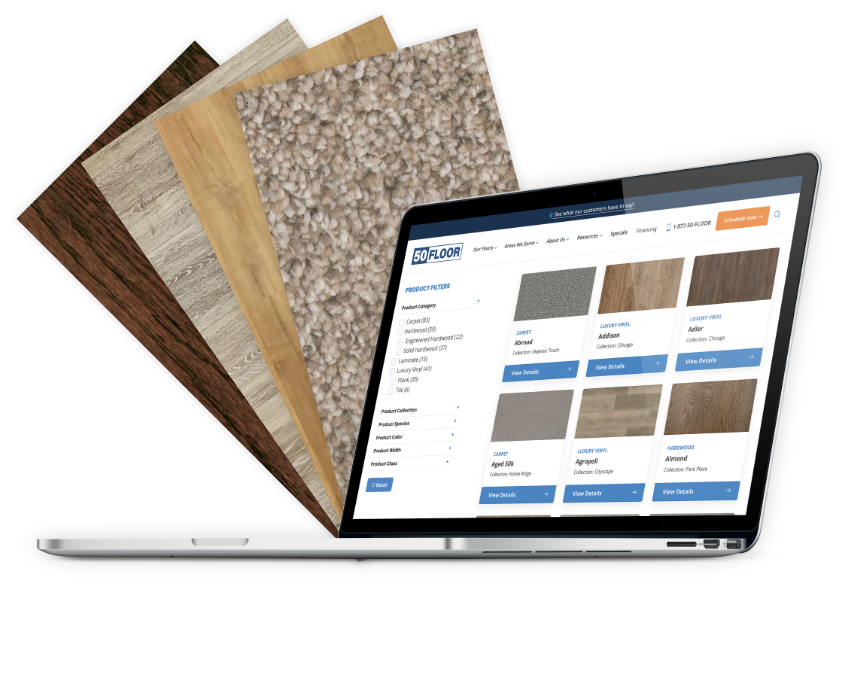Yes, mold- and mildew-resistant laminate flooring can help prevent mold growth in damp environments. But mold can still develop beneath laminate flooring if there is excessive moisture or if it’s not installed properly.
This page will provide more information on how laminate flooring can prevent mold.


Properties of Laminate Flooring Against Mold
Resistance to Moisture
Laminate flooring is constructed with a protective overlay and a water-resistant core, typically made from high-density fiberboard (HDF). The overlay keeps water from penetrating the surface, while the HDF provides an additional barrier.
Due to this structure:
- Surface: The wear layer effectively repels water and spills, minimizing moisture absorption.
- Core: HDF is treated to resist moisture infiltration, which discourages mold growth from within.
Antibacterial and Antifungal Agents
Modern laminates often include antimicrobial agents added during manufacturing.
These agents provide active mold and bacteria resistance:
- Antibacterial: Agents like silver ions interfere with bacterial cell function, preventing reproduction.
- Antifungal: Chemical compounds disrupt mold spores and fungi, halting their lifecycle.
Both types of agents ensure a hostile environment for microorganisms, keeping your laminate surface hygienically safer.
| Agent Type | Mode of Action |
|---|---|
| Antibacterial | Disrupts bacterial cell function and prevents growth |
| Antifungal | Inhibits spore and fungi life cycle |




Maintenance and Mold Deterring Practices
Regular Cleaning
Use a soft-bristle broom or a vacuum with a laminate-safe attachment to remove loose dirt and debris daily.
Wipe spills immediately with a damp cloth and dry the area immediately to prevent moisture absorption.
For a deeper clean, use a mild detergent or a commercial laminate floor cleaner as recommended by the flooring manufacturer. Avoid excessive water or steam cleaning, as moisture can seep into the laminate, creating a ripe environment for mold to flourish.
Humidity and Ventilation Control
Maintaining a stable indoor environment is critical for preventing mold on your laminate floors. Keep your home’s humidity levels between 30% and 50%.
Use ventilation in areas prone to moisture, like kitchens and bathrooms, by installing exhaust fans or using dehumidifiers when necessary.
Use a dehumidifier to optimize humidity during the rainy season. Regularly open windows to help circulate air and reduce moisture.
GET INSPIRED
Flooring to MATCH YOUR STYLE
Potential Issues and Prevention
Address Water Damage Immediately
Remove the water from your laminate floor as soon as possible as quickly as possible. Use towels or a wet vacuum to absorb standing water, then dry the area thoroughly with fans and dehumidifiers. Check the underlayment for moisture, as it can harbor mold beneath the laminate.
Mold Remediation
It’s advisable to call a professional for this one. A professional can give valuable insight on your mold problem as well as do a complete detection in case there are molds hiding in your house. Plus, they can help you save money.
















